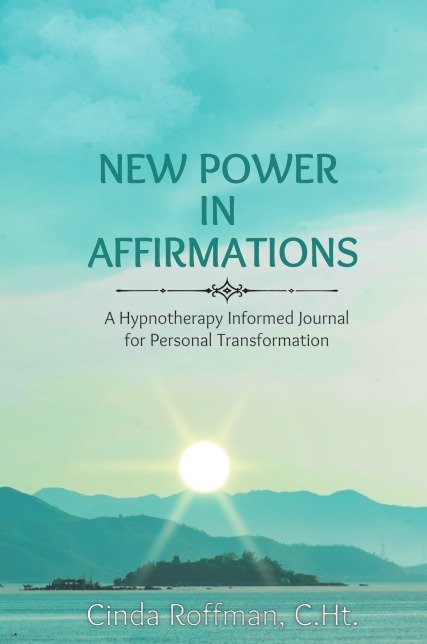Every May, during National High Blood Pressure Education Month, healthcare professionals and wellness advocates join forces to raise awareness about the silent but serious threat of hypertension—commonly known as high blood pressure. Supported by the National Heart, Lung, and Blood Institute (NHLBI), this month is a powerful reminder that blood pressure control isn’t just about pills and doctor visits. It’s about habits—and habits can be changed.
This is where hypnotherapy steps in as an effective, often overlooked partner in heart health.
Twenty-five years ago, a friend told me about how she had lost weight through hypnotherapy. After much thought, I decided to give it a try. What was I working on? Weight loss and exercising more. I enjoyed the experience and was surprised about the change in my behavior toward food and exercise. Most surprisingly, the morning after I was hypnotized, I got up early – no alarm – and started getting ready to go walking, my preferred form of exercise. As I was putting my shoes on, I realized that I actually was looking forward to walking and getting some exercise! That had not happened before… Hypnosis also changed how I looked at food. It was no longer a compulsion but a way to fuel my body. Yes, hypnosis can make a change in healthy habits for the better.
High Blood Pressure: The Lifestyle Link
High blood pressure affects nearly half of American adults, and it often goes undetected until it contributes to serious conditions like heart disease, stroke, or kidney failure. While genetics and age can play a role, many of the most common causes of high blood pressure are linked directly to your lifestyle choices:
Poor diet, especially one high in salt, sugar, and processed foods
Lack of physical activity
Smoking and excessive alcohol consumption
Chronic stress and poor emotional regulation
Sleep disturbances or insufficient rest
The good news? These are all modifiable factors—and hypnotherapy can help you address the subconscious patterns that keep you stuck in unhealthy cycles.
Why Habits Are So Hard to Break
You want to be healthier. So why is lasting change so elusive?
Because habits are formed in the subconscious mind, where automatic responses and emotional conditioning reside. You may know you should exercise or stop reaching for salty snacks, but if your deeper programming equates those habits with comfort, distraction, or reward, willpower alone may not be enough.
Your professional hypnotherapist can help you to tap directly into that subconscious space—where real, lasting transformation happens.
How Hypnotherapy Supports Heart-Healthy Change
Here’s how hypnotherapy can address key hypertension-related behaviors:
1. Smoking Cessation
Smoking is a top contributor to elevated blood pressure and cardiovascular disease. Hypnotherapy can help:
Unlink smoking from emotional triggers (stress, boredom, social anxiety)
Create a subconscious identity shift (“I’m a non-smoker now.”)
Reinforce your self-control and motivation
2. Healthier Eating Patterns
Salty, processed, and sugary foods are common culprits behind rising blood pressure. Hypnosis can:
Help you reduce cravings by reframing internal reward systems
Strengthen positive associations with nutritious, whole foods
Encourage mindful eating and satisfaction with smaller portions
3. Increased Physical Activity
Getting into an exercise routine can be daunting. Hypnotherapy can:
Remove mental resistance and procrastination
Reinforce positive feelings around movement and energy
Establish an internal narrative of capability and self-worth
4. Stress Reduction
Chronic stress triggers the release of hormones that raise blood pressure. Your hypnotherapist can help you to:
Activate the parasympathetic (“rest and digest”) response
Learn self-hypnosis or relaxation techniques to use daily
Build emotional resilience for handling pressure at work or home
5. Better Sleep
Poor sleep can increase both stress and blood pressure Hypnotherapy supports:
Faster sleep onset and deeper rest
Reduction of nighttime rumination
Repatterning of the body’s circadian rhythm
Hypnosis Is Not a Magic Cure—but It’s a Powerful Catalyst
It’s important to recognize that hypnotherapy is not a substitute for necessary medical treatment. If you’ve been diagnosed with hypertension, you should always work with your doctor to monitor and manage your blood pressure. However, hypnotherapy is a complementary tool that can dramatically boost your ability to follow through on heart-healthy habits.
When paired with proper nutrition, medication (if needed), and regular checkups, hypnotherapy can help you finally move past the blocks that have held you back for years.
This May, Prioritize the Habit Shift
During National High Blood Pressure Education Month, consider this a call to action: not just to be more aware of high blood pressure, but to take steps toward rewiring your lifestyle at the root level.
If you’ve been struggling with the same patterns—skipping workouts, overindulging in stress snacks, lighting up even though you want to quit—hypnotherapy may be the missing piece. Because changing your blood pressure begins with changing your habits and changing your habits begins in the mind.
Want to Learn More?
Want to learn more about using hypnotherapy to support a heart-healthy lifestyle? I am available for a Free, private 30 minute phone consultation for new clients. Please call me at 818-929-4944 or go to cindaroffman.com to book a free consultation.
Sincerely,
Cinda
HypnoNews and Resources
Please see the following for additional perspectives on NHLBI’s health topics and some recent research summarizing the current knowledge on the role that hypnosis and hypnotherapy have in reducing anxiety, also explaining how this can impact the cardiovascular system and the prevention of CVD.
NHLBI’s health topics provide information to help you learn more about heart, lung, blood, and sleep conditions, diagnostic tests, and treatments.
https://www.nhlbi.nih.gov/health
“Close your eyes and relax”: the role of hypnosis in reducing anxiety, and its implications for the prevention of cardiovascular diseases



















